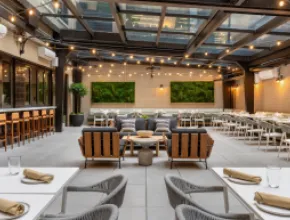The recent news about a family of four from Iowa found dead in their condo in Tulum, Mexico, brought to light a little publicized risk lurking in every kind of lodging. Carbon monoxide (CO) poisoning can happen within a matter of minutes and is responsible for more deaths than any other single poison.
In the case of the family in Mexico, all four members asphyxiated on toxic gas in the condo, likely leaking from a water heater, according to Mexican authorities.
CO emissions are produced whenever fuel such as gas, oil, kerosene, wood or charcoal is burned, according to the Carbon Monoxide Poisoning website. While the amount of CO produced by these fuel-burning appliances is usually not harmful, if appliances are not functioning properly the levels can become hazardous.
Other culprits inside hotels include old boiler systems that are poorly maintained and pool heaters.
Even in low levels, carbon monoxide can cause health problems. Early symptoms can be nausea, headaches and light-headedness, while moderate levels can cause permanent neurological dysfunctions. If not treated promptly carbon monoxide poisoning can result in long-term health problems.
Attorney Gordon Johnson, based in Sheboygan, Wis., focuses his practice on carbon monoxide poisoning-related brain damage. He is also past-chair of the TBILG, a national group of more than 150 brain injury advocates.
There are 600-800 cases a year of carbon monoxide poisoning related deaths, according to Johnson, and for every death 20 cases of brain damage. The Centers for Disease Control and Prevention (CDC) states a slightly more conservative estimate: Over 10,000 are poisoned by carbon monoxide needing medical treatment each year and more than 438 people in the U.S. die annually from carbon monoxide poisoning.
Johnson said brain damage can occur in four basic categories:
- Changes in cognition: how we think and remember.
- Changes in mood: anxious, depressed.
- Changes in behavior: decision making.
- Central nervous system problems: balance, dizziness, problems reading.
“The cause of death is usually cardiac damage,” Johnson said. “There is not enough oxygen to keep the heart beating.” Johnson spells out the dangers on his website:
Carbon monoxide in hotels is one of the most dangerous situations we encounter in our practice. When carbon monoxide happens when multiple people are awake, the contemporaneous onset of similar symptoms in more than one person at a time, may warn those being poisoned that something other than illness is involved.
But when carbon monoxide strikes in the middle of the night, death is a stark reality. Even in those who survive, the carbon monoxide levels in the blood, COHb levels, may reach levels that permanent disability is likely.
In some situations, the onset of nausea and vomiting may awake the hotel guests, but since they do not suspect the nature of what is happening, they may try return to sleep.
The best protection is having a carbon monoxide detector in hotel rooms.
Five years ago there were not any states requiring hotels have detectors in rooms, but now 14 states require the installation of carbon monoxide detectors in hotels and motels.
But Johnson warns that most detectors are not reliable or sensitive enough.
“You can get relatively significant levels of poisoning without an alarm going off,” he said. “To be safe get a sensitive carbon monoxide detector and carry it with you all the time.”
One model of carbon monoxide detector he recommends is offered on Amazon.
“If you suspect carbon monoxide poisoning, get out,” Johnson said. “Don’t stay to open doors and windows and air the place out—get out. Let the fire department come and measure levels.
"If it’s in a convention area, get out and take everybody with you.”






